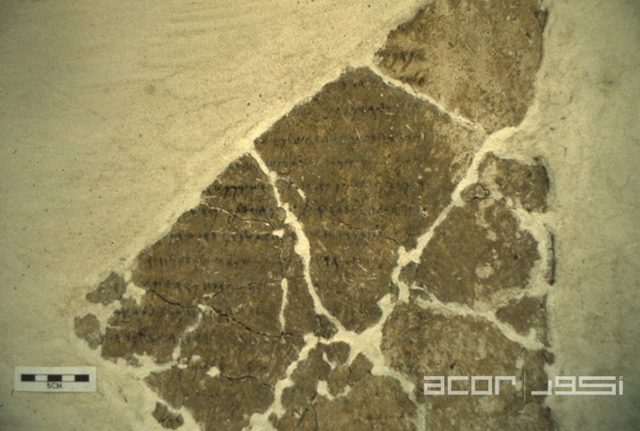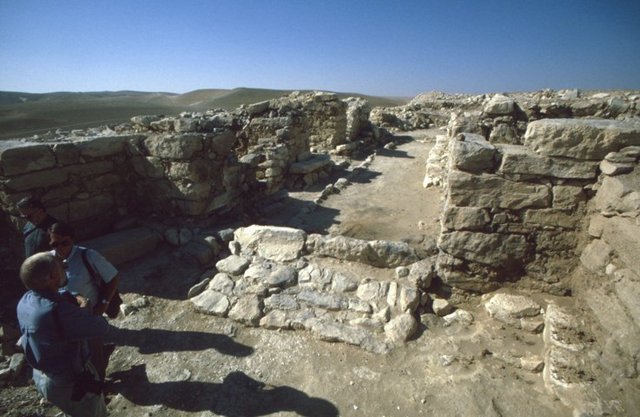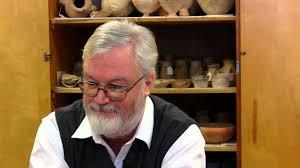You are here
Ancient cultic temples: Studying archaeological findings of Pella
By Saeb Rawashdeh - Mar 12,2024 - Last updated at Mar 12,2024

Ancient Pella, a site located some 100 km northwest of Amman has a long history of occupation that goes back to the Bronze Age (Photo of Bob Miller)
AMMAN — Pella, an ancient site located approximately 100 kilometres northwest from Amman, was discovered in 1818 by Charles Irby and James Mangles. Pella was part of ancient Decapolis, a coalition of cities during the Hellenistic Period, and it was a Bronze Age centre.
The large site consists of two tells and a Roman/Byzantine city located between the hills. In recent years, a temple complex has been excavated here, with six superimposed temples, the earliest one from the Middle Bronze Age I, ca. 1,900BC, according to the Australian archaeologist, Stephen Bourke, from The University of Sydney.
The uppermost temple was built ca. 950BC, said the Dutch independent archaeologist Margreet Steiner, and it is much smaller than its Bronze Age predecessors and built in a “bent-axis” design.
Both Bourke and Steiner studied cultic places and temples from the Bronze and Iron periods in Transjordan.
The temple consists of a central room with benches around its north and west sides and what appears to be a stepped podium for the display of votive objects, Bourke said, adding that this room was found empty except for several red-slipped plates.
“The smaller northern room was filled with baskets of lentils and bags of grain burnt in the final destruction which took place around 800BC. This destruction may be the result of the same earthquake that destroyed Deir Alla, although the excavator does not exclude ‘a human agency in the destruction’, Bourke explained, adding that to the east of the room is an open courtyard with several pits and a stone-built altar.
“Many objects were recovered from these ‘votive offering pits’ and from the destruction debris besides the altar. These include ring kernoi, petal-garlanded chalice and fragments from several square stands, a model shrine with bulls-head protomes [protome- a type of adornment that takes the shape of the head or upper torso of a human or an animal], incense cups and fragments of at least one large cauldron with ceramic bulls-head protomes,” Bourke elaborated.
However, not many figurines were found, but these include a fragment of an Ashdoda figurine and a male head wearing a polos headgear.
Furthermore, a variety of basalt and limestone vessels, braziers, and scoops were among the non-ceramic finds while household vessels were abundant, such as large storage jars, cooking pots and bowls, Steiner said.
According to the excavator, this may indicate a less strict division between sacred and profane than in the earlier temples or a remarkable change in offering rituals, Bourke underscored, adding that burnt offering seems to have taken place in the courtyard, as many pits contained animal bones, mostly of young sheep and goat.
“This building can be identified confidently as cultic because of the continuity with the earlier Bronze Age temples, the presence of special pottery vessels such as the kernoi, chalices and model shrines, and the altar and favissae [a cultic storage space] in the courtyard,” Bourke underlined, noting that it remains unknown which deity was worshipped at this temple.
There are indicators that Sea people who came from the Aegean in the late Bronze Age built the shrine, but it is still a speculation. Some figurines and scoops have Aegean origin but that speculation remains without enough evidence to conclude who organised rites at the temple and what deity was worshipped.
Related Articles
AMMAN — The places of worship tend to have different architectural shapes through the history of religious practice.
AMMAN — Some of cultic places during the Bronze and Iron Age on a territory of Transjordan are Ataruz, Deir Alla, Ammon, Mudayna and Busayra
AMMAN — Exploring Pella and its occupation from the prehistoric to the Ottoman period is an integral part of the research conducted by local
















